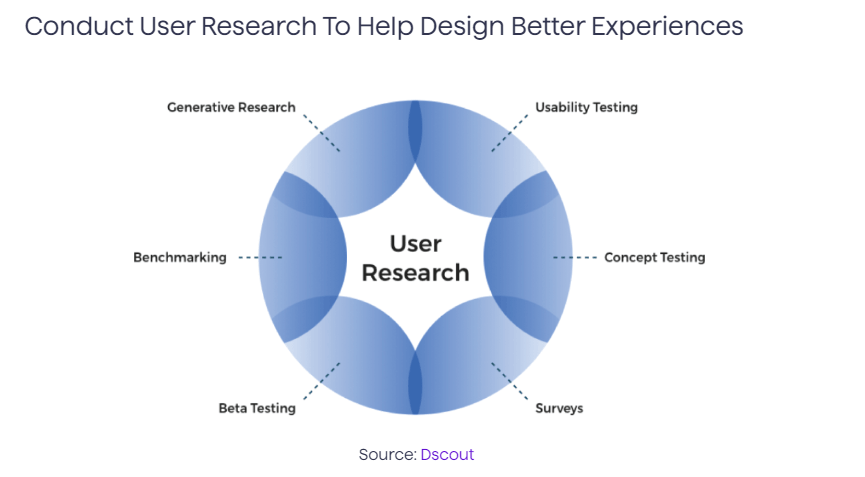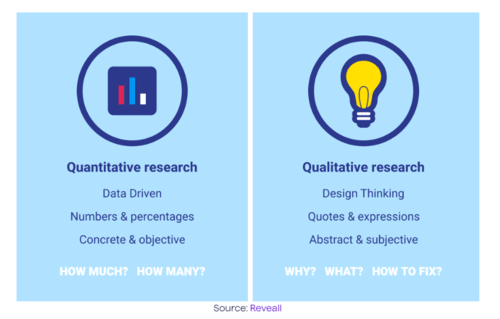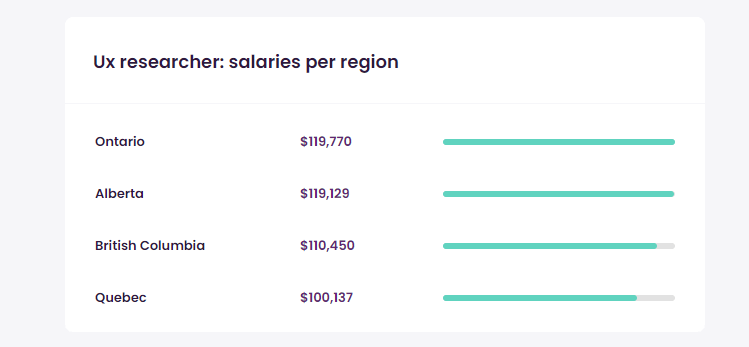What is a UX Researcher?

A UX researcher learns and studies user behaviour, identifies their needs and uses the information to design and develop better user experiences, products and services. UX Researchers also test and validate designs to ensure they meet user needs. Their main goal is to provide the users with the best experience and this can be done with the help of proper research. This includes how they are going to utilize the product, what’s their experience with that product, and what issues arise while using it.
What is UX Research?
UX Research is like any other form of research, which follows certain steps including testing different prototypes and iterations to get the best results. Finally, the results are analyzed and used to make changes in the design. There are different research methods to be followed and it totally depends on what kind of experience issue is and how it can be tackled. Let us move further and understand different types of research.
Types of Research
- Qualitative
- Quantitative

All research comes in two ways: qualitative and quantitative. Let us understand what the difference between both of them is and why their results are important.
Qualitative Research
Qualitative research involves gathering non-numerical data, such as opinions, feelings, and motivations, through methods like interviews, focus groups, and observations. This type of research aims to understand the underlying reasons and motivations behind behaviors.
Quantitative Research
In terms of UX research, qualitative research helps in understanding the user experience on a deeper level by exploring their emotions, preferences, and behaviors. It provides insights into why users behave in a certain way and helps in identifying issues and areas for improvement.
Holistic Research
Both qualitative and quantitative research methods are essential in UX research as they complement each other and provide a holistic view of the user experience. Qualitative research helps in uncovering insights and generating hypotheses, while quantitative research helps in validating these insights and making data-driven decisions. By combining both approaches, UX researchers can gain a comprehensive understanding of user behavior and design products that meet user needs effectively.
What are the job duties of a UX Researcher?

UX Researchers have different duties to be performed. Every company will have a different set of duties to be performed by a UX Researcher. Moving further UX Job Roles and Responsibilities can be understood in detail. According to the details by Indeed Job portal, in small companies with limited IT departments, UX researchers may also assume IT support duties. Common responsibilities for UX researchers in such scenarios include:
- Presenting research findings to developers, designers, and stakeholders
- Collaborating with programmers and web developers to build a diverse team
- Considering company costs and budgets when making recommendations
- Ensuring website compliance with legal and equal opportunity policies
- Setting budgets and timelines for research projects, translating research results into actionable insights, selecting appropriate data collection methods and defining research questions
- Recruiting participants for Research studies
- Assisting with sketching, prototyping, and user testing of product designs
- Conducting stakeholder and client interviews
- Creating personas and visual aids to convey insights
- Developing usability research screeners and discussion guides
- Establishing and executing a research strategy.
How to become a UX Researcher in Canada

Every profession requires a different degree of experience and becoming a UX Researcher also requires specific qualification and skills. In recent years, the field of User Experience (UX) research has gained significant traction in Canada, with a growing demand for skilled professionals who can understand user behavior and design products that meet their needs effectively. If you are interested in pursuing a career as a UX researcher in Canada, below are some steps to help you get started on this rewarding journey.
Education and Training
With proper education you can gain the necessary skills to master your profession. To become a UX researcher in Canada, a strong educational background in fields such as psychology, human-computer interaction, design, or related disciplines is essential. Many universities and colleges offer specialized programs in UX design and research that can provide you with the necessary knowledge and skills to succeed in this field.
Acquire Practical Experience
Practical experience is essential for individuals aspiring to become UX researchers. Applying your knowledge to practical tasks can help you gain real world experience and this can be possible by engaging yourself in internships, cooperative programs, or volunteer opportunities. This can surely help you gain valuable hands-on experience in conducting user research, usability testing, and analyzing data. Developing a robust portfolio that highlights your projects and research outcomes can greatly bolster your credibility within the field of UX research.
Gain Technical Proficiency
Apart from grasping user behavior and design principles, UX researchers must excel in utilizing a variety of research tools and software. Familiarize yourself with platforms for user testing, survey tools, and data analysis software to effectively conduct research and interpret findings.
Cultivate Professional Relationships
Establishing a network is crucial for progressing in your career as a UX researcher in Canada. Engage in industry gatherings, conferences, and workshops to connect with peers and stay informed about the latest industry trends and best practices. Building a robust professional network can create opportunities for collaboration and career advancement.
Stay Informed and Embrace Continuous Learning
The landscape of UX research is ever-evolving, with new methodologies and technologies emerging regularly. Keep ahead of industry developments, research techniques, and best practices through reading, attending webinars, and enrolling in online courses. Continuous learning and professional growth are imperative for remaining competitive in the field.
Lastly, establishing a career as a UX researcher in Canada necessitates a blend of education, hands-on experience, technical acumen, networking, and a dedication to ongoing learning. By following these guidelines and committing to enhancing your skills, you can embark on a rewarding journey in UX research, contributing to the creation of impactful and user-centric experiences for individuals in Canada and beyond.
UX Researcher career opportunities in Canada
In Canada, numerous career prospects await UX Researchers across diverse industries like technology, healthcare, finance, e-commerce, and beyond. By keeping abreast of industry developments, building a strong professional network, and highlighting your research capabilities, you can pursue a range of fulfilling career opportunities in the field of UX Research.
The field of UX research is expanding, with 41% of researchers having less than five years of experience. However, the size of UX researcher teams is projected to increase as well. According to a survey by User Interviews, 71% of UX researchers reported having five or more team members. The total compensation package for a UX researcher is influenced by various factors, such as the candidate’s experience and location. Below, you will find detailed information on the average salary for UX researchers.
Salary of a UX Researcher in Canada
According to ca.talent.com, UX researchers in Canada make an average salary of $119,826 per year or $61.45 per hour. Most experienced workers earn up to $205,000 per year, while entry-level jobs start at $92,288. It is important to note that the pay scale also varies by region. The picture below shows how it varies in different regions of Canada.

If you are in Canada and are considering a career as a UX Researcher, it’s the right time to enroll at ABM College and fulfill your dreams by entering into the field of UX Researchers. ABM College provides a UI/UX Diploma Program which will help you gain the necessary skills and knowledge to become a successful UX Researcher. The college also offers job hunting assistance to help you find a job in Canada.
Get Started with ABM College…
As a prospective student, you will have to consider a variety of factors, including the curriculum offered, faculty expertise, industry connections and career opportunities following the completion of the program at ABM College. ABM College focuses on providing quality education to students. Students are taught directly and trained on industry-standard software. The school also offers job hunting assistance to students, as well as access to a network of industry professionals. Additionally, the school provides career counseling services to help students make informed decisions about their career paths.
Lastly, the college provides a wide range of courses tailored to the needs of students. They can pursue their studies while working. Don’t miss the chance to become a UX Researcher, enroll now for our upcoming batch of UI/UX Diploma. Click here to read more industry related blogs.
About The Author

Social Media Specialist & Content Writer, ABM College
Navneet Arora is an experienced social media strategist and SEO-focused content writer specializing in education, career development, and digital marketing. She holds a Master’s Degree in Journalism & Mass Communication and has over 8 years of hands-on experience crafting high-performing content for blogs, websites, and digital platforms.
At ABM College in Calgary, Alberta, Navneet develops engaging, research-driven articles that help students, professionals, and career changers navigate today’s job market. Her work has been published on leading Indian national news portals and recognized for driving measurable traffic growth.
Connect with Navneet on LinkedIn or read more of her work on the ABM College Blog.
